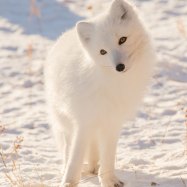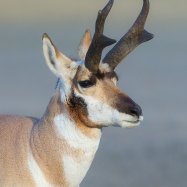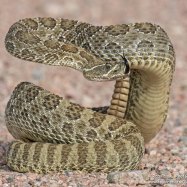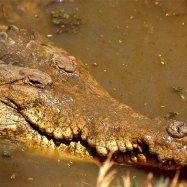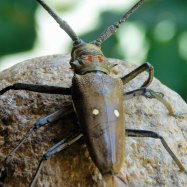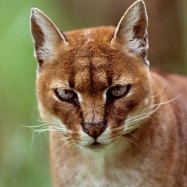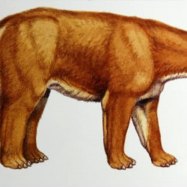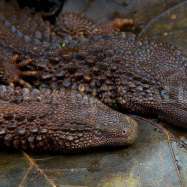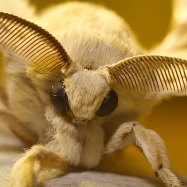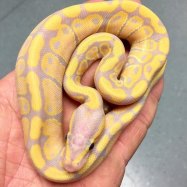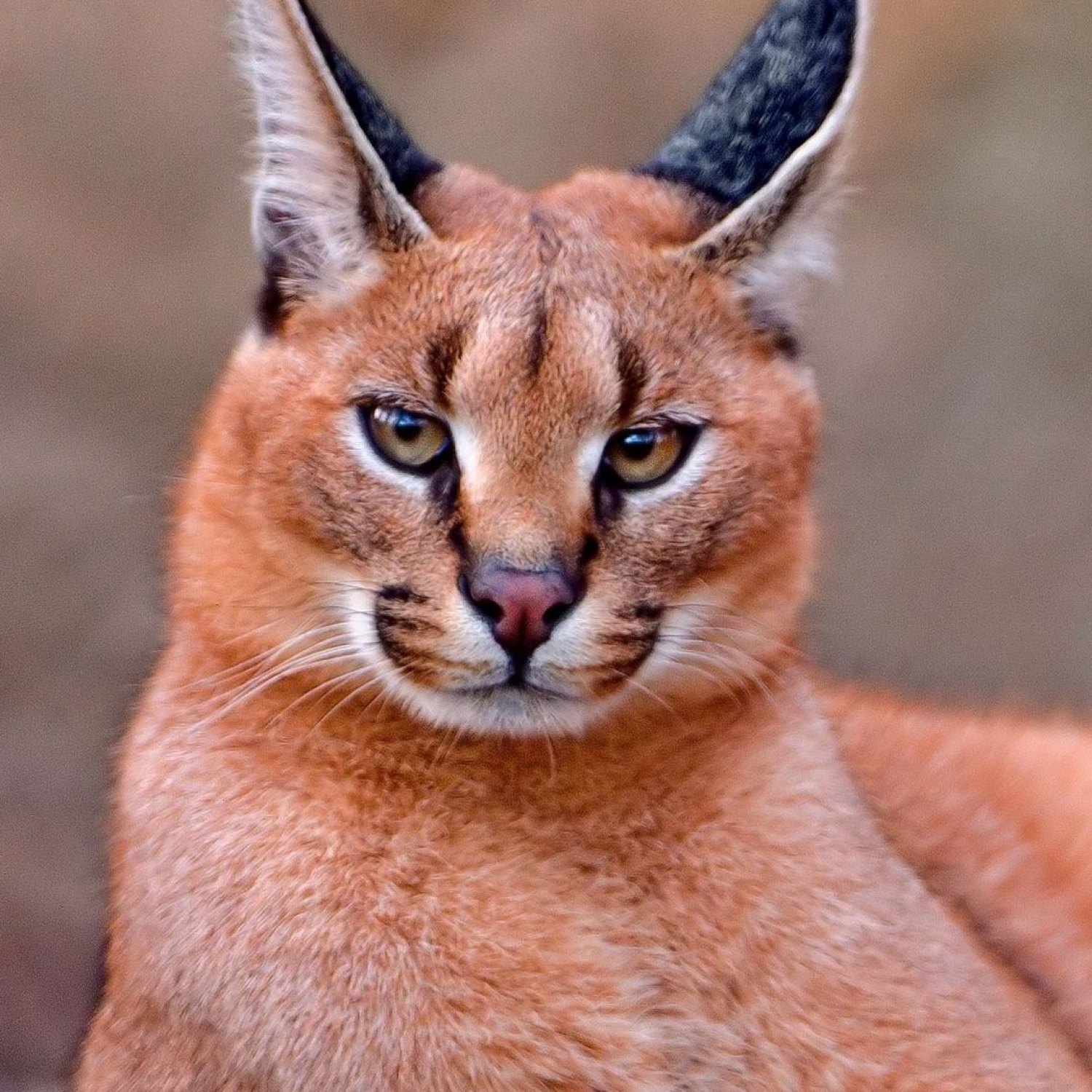
Caracal
65-98 cm
The caracal, a medium-sized and muscular feline, is a true African beauty. Its impressive length of 65-98 cm and widespread presence in Southern, Eastern, and Western Africa, as well as the Middle East, Central Asia, and India, make it a fascinating sight to behold. Belonging to the Felidae family, this majestic animal is a must-see for wildlife enthusiasts. #caracal #wildlife #Africa
Animal Details Summary:
Common Name: Caracal
Kingdom: Animalia
Habitat: Savannas, woodlands, scrublands
The Mighty Caracal: The Cat That Can Leap High and Hunt Low
Meet the caracal (Caracal caracal), also known as the "desert lynx" or "Persian lynx", a medium-sized wild cat that roams the vast grasslands of Africa, Middle East, and parts of Asia. Its name comes from the Turkish word "karakulak" which means "black ear", referring to its distinctive black tufted ears. Don't be fooled by its elegant appearance, this feline is a skillful hunter and an agile jumper, making it one of the most formidable animals in the African savanna.A Carnivorous Creature with a Wide Range
The caracal, like all members of the Felidae family, is a carnivorous animal, meaning it feeds exclusively on meat Caracal. Its diet mainly consists of small mammals such as rodents, hares, and hyraxes, but it is also capable of taking down prey up to three times its own weight. It uses its sharp, retractable claws and powerful jaws to hunt and kill its victims.This majestic creature has a wide range, being found in various countries in Africa, the Middle East, Central Asia, and India. It is mostly found in Africa, where its population is the greatest. However, due to its elusive nature, little is known about the exact population size and distribution of the caracal.
A Habitat Fit for a King
The caracal is a versatile predator that can adapt to various habitats, but it is most commonly found in savannas, woodlands, and scrublands. These areas provide the perfect balance of vegetation and open space for the caracal to thrive. It is a solitary animal, so it prefers to live in areas with low human disturbance, making the vast savannas of Africa and the remote mountains of the Middle East an ideal home for this wild cat.An Appearance That Demands Respect
The caracal is a stunning animal with a tan to reddish-brown coat that perfectly camouflages it in its natural habitat Crested Penguin. Its coat is short, soft, and dense, providing insulation from the heat of the savanna and protection from thorny bushes. The most distinctive feature of the caracal, however, is its long black tufted ears, which can grow up to 5 cm in length. These ears are not only used for hearing but also to communicate with other caracals. When a caracal wants to express dominance, it will raise its ears as a sign of strength. The caracal also has a white underbelly and a black-tipped tail, both of which add to its striking appearance.A Fit and Agile Hunter
The caracal may not be the largest wild cat, but it is certainly one of the strongest. It has a muscular body, with a long neck and powerful legs, giving it an elegant yet robust appearance. It can weigh up to 18-20 kg, and its body length ranges from 65-98 cm, making it a medium-sized cat in the Felidae family.The caracal is an ambush predator, meaning it patiently waits for its prey to come close before launching a powerful attack. It has great agility and can jump up to 3 meters in the air, making it one of the highest jumping cats in the world. This skill comes in handy when hunting birds, which make up a significant part of its diet. It also has excellent vision and a strong sense of smell, allowing it to spot its prey from a distance.
A Caracal's Life Cycle
Female caracals can reproduce twice a year, with the breeding season varying depending on the location. After a gestation period of 68-81 days, the female caracal gives birth to a litter of 1-6 kittens, which she raises on her own. The kittens are born with their eyes closed and are fully dependent on their mother for the first few weeks of their lives. They start accompanying their mother on hunts at around six months old and reach sexual maturity at 18-24 months. The average lifespan of a caracal in the wild is around 12 years.A Threatened Species
The caracal has a wide distribution, but it is classified as a vulnerable species by the International Union for Conservation of Nature (IUCN). Its population is declining, mainly due to habitat loss and fragmentation, as well as human-wildlife conflict. In some areas, they are also hunted for their beautiful fur. Conservation efforts are in place to protect this majestic animal and its habitat.Summer the Caracal: A Story of Survival
Summer was a young caracal born in the vast savannas of Southern Africa. She was one of four kittens in her litter, and her mother did everything in her power to ensure their survival. As soon as she was old enough, Summer and her siblings joined their mother on hunts, learning the skills they would need to survive on their own.However, one day, their peaceful existence was shattered when a group of humans entered their territory. They were setting up a new settlement, and the noise and disturbance caused by their machinery made hunting nearly impossible. Summer's family started to grow thin, and her mother was forced to take more significant risks to provide for them.
One day, while hunting for a meal, Summer's mother was tragically killed by a farmer who mistook her for a threat to his livestock. Left to fend for themselves, Summer and her siblings scattered, each trying to find a new home.
Summer traveled for miles, navigating the treacherous savannas and avoiding areas inhabited by humans. Eventually, she found herself in a remote part of the savanna, where she met another lone caracal, a male named Shadow. The two quickly bonded, and they became a formidable pair. Together, they roamed the savanna, hunting for prey and defending their territory from other predators.
Summer and Shadow faced many challenges, but their bond and their natural abilities allowed them to overcome every obstacle. They were a perfect example of the resilience and strength of the caracal, a species that is often overlooked but fiercely independent and capable of surviving even in the harshest of conditions.
The Importance of Protecting the Caracal
The story of Summer and Shadow highlights not only the incredible nature of the caracal but also the threats they face in the wild. As human development continues to encroach on their habitat, it is crucial to protect this magnificent animal and ensure its survival for future generations. Conservation efforts, such as protected areas and management of human-wildlife conflict, are essential in safeguarding the caracal's survival.In addition, it is also vital that we raise awareness about this lesser-known species and its critical role in maintaining the balance of ecosystems. By understanding and appreciating the beauty and abilities of the caracal, we can better appreciate the diversity of life on our planet and the importance of preserving it.
A Majestic and Misunderstood Creature
The caracal is a creature that demands admiration and respect. Its elegant appearance and impressive skills make it a formidable predator, yet its elusive nature has kept it mostly hidden from the human eye. As we continue to learn more about this extraordinary animal, it is essential to ensure its protection and conservation for future generations to appreciate its enigmatic beauty.

Caracal
Animal Details Caracal - Scientific Name: Caracal caracal
- Category: Animals C
- Scientific Name: Caracal caracal
- Common Name: Caracal
- Kingdom: Animalia
- Phylum: Chordata
- Class: Mammalia
- Order: Carnivora
- Family: Felidae
- Habitat: Savannas, woodlands, scrublands
- Feeding Method: Carnivorous
- Geographical Distribution: Africa, Middle East, Central Asia, India
- Country of Origin: Mostly found in Africa
- Location: Southern Africa, Eastern Africa, Western Africa, Middle East, Central Asia, India
- Animal Coloration: Tan to reddish-brown with white underbelly
- Body Shape: Medium-sized and muscular
- Length: 65-98 cm
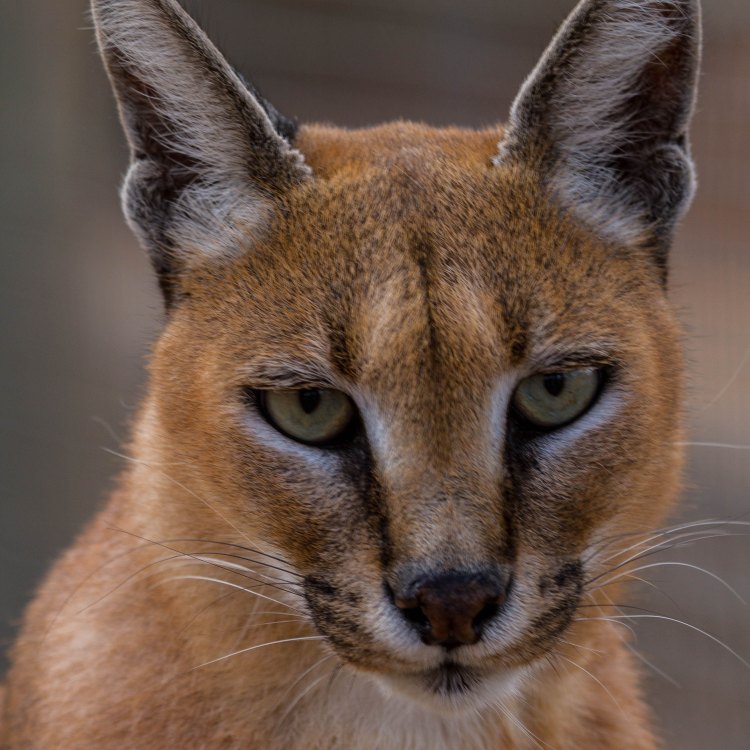
Caracal
- Adult Size: 60-90 cm tall at the shoulder
- Average Lifespan: 12-15 years
- Reproduction: Sexual
- Reproductive Behavior: Mating occurs throughout the year
- Sound or Call: A variety of vocalizations including hissing, growling, and purring
- Migration Pattern: Non-migratory
- Social Groups: Solitary or small family groups
- Behavior: Nocturnal and solitary, excellent climbers and jumpers
- Threats: Habitat loss, poaching, and conflict with humans
- Conservation Status: Least Concern
- Impact on Ecosystem: Caracals play a role in controlling rodent populations
- Human Use: Hunted for their fur, sometimes kept as exotic pets
- Distinctive Features: Tufted ears and long, black tufts of fur on the tips of their ears
- Interesting Facts: Caracals are known for their exceptional jumping ability
- Predator: Lions, leopards, and hyenas
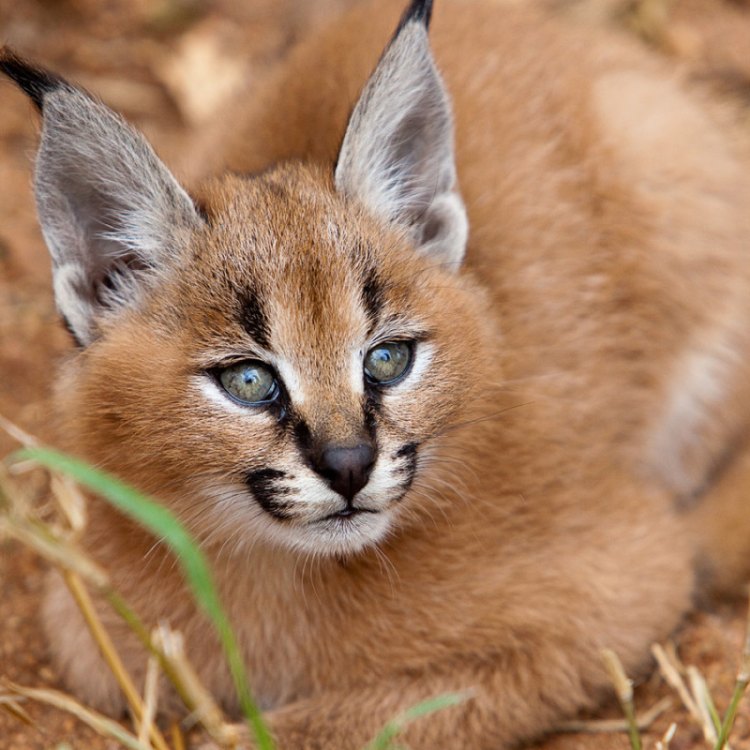
Caracal caracal
The Elusive Caracal: A Fascinating Feline of the African Savanna
Deep in the African savanna, among the tall grass and acacia trees, prowls a magnificent and elusive creature - the caracal. This medium-sized wild cat has captured the imagination of humans for centuries with its striking appearance and unique features. From its tufted ears to its exceptional jumping ability, the caracal has many fascinating qualities that make it a truly remarkable animal.Standing at 60-90 cm tall at the shoulder, the caracal is not as large as its fellow African big cats such as the lion or leopard, but it still commands attention with its sleek and muscular build PeaceOfAnimals.Com. Its coat is a beautiful shade of tawny, with white fur on its belly and throat, giving it a regal appearance. However, it's the caracal's most distinctive feature that truly sets it apart from other felines - its long, black tufts of fur on the tips of its ears.
These ear tufts, also known as lynx tips, not only add to the caracal's unique appearance but also serve a purpose. They are believed to aid in communication, with the ability to rotate up to 180 degrees, allowing the caracal to better detect sounds and locate prey. These tufts also give the caracal a fierce and intimidating look, which may help deter potential predators.
These solitary hunters are mainly nocturnal, using their excellent climbing and jumping abilities to navigate through the savanna and hunt their prey. Their preferred diet consists of small mammals such as rodents, hares, and small antelopes. However, when food is scarce, they have been known to take down larger prey, such as young ostriches or antelopes.
Caracals are also remarkable for their reproductive behavior Croatian Sheepdog. Unlike other wild cats, they do not have a specific mating season and can reproduce throughout the year. Males and females come together for a short period to mate, after which the male has no involvement in raising the young.
Female caracals give birth to litters of one to six kittens, which they raise on their own. It takes about six months for the kittens to become independent, and they will often stay with their mother for up to a year before venturing out on their own.
But the lives of caracals are not easy. Like many other wild animals, they face numerous threats, including habitat loss, poaching, and conflict with humans. In some areas, they are hunted for their fur, which is used in traditional clothing and crafts. They are also sometimes kept as exotic pets, which can have a detrimental impact on their well-being.
These threats have led to a decline in the caracal population in some areas. However, the species as a whole is classified as "least concern" by the International Union for Conservation of Nature (IUCN). This is due, in part, to the caracal's non-migratory behavior, which allows them to adapt to different habitats and environments. They can be found in various areas across Africa, the Middle East, and parts of Asia.
But it's not just their population that makes caracals important to their ecosystems. These fierce felines play a crucial role in controlling rodent populations in their habitats. With their excellent hunting skills, they help keep the balance of prey and predator in check, ensuring the health and stability of their environment.
Despite their elusive nature and importance to their ecosystems, caracals still face many challenges. That's why conservation efforts are crucial in ensuring their survival. Organizations such as the Caracal Project and the African Wildlife Foundation work to protect these beautiful creatures and their habitats.
In addition to their ecological importance, caracals also hold cultural significance. In ancient Egyptian mythology, the caracal was believed to be a symbol of the goddess Bastet, who was associated with protection, motherhood, and fertility. This connection with ancient legends further emphasizes the caracal's majestic and mystical reputation.
But perhaps one of the most fascinating and impressive facts about caracals is their exceptional jumping ability. These wildly athletic cats can jump up to three meters in the air, making them one of the highest jumping animals relative to their body size. This ability comes in handy when hunting and navigating the savanna, allowing them to reach higher branches and ambush their prey from above.
Despite being fierce hunters and capable of defending themselves against most predators, caracals still have their own natural enemies. Lions, leopards, and hyenas are known to prey on them, particularly the young or weaker individuals. However, thanks to their agility and stealth, they can often evade these larger predators.
In conclusion, the caracal is truly a remarkable and fascinating creature. With its distinctive features, impressive athletic abilities, and crucial role in its ecosystem, it's no wonder humans have been captivated by this elusive feline for centuries. As we continue to learn more about this unique animal, it's important to remember the importance of their conservation and protection for future generations to appreciate and admire.
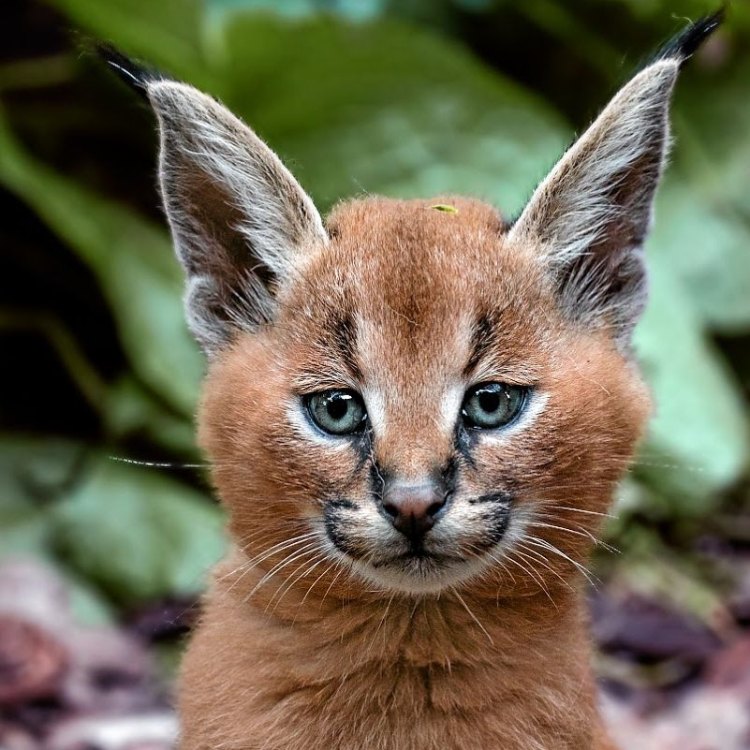
The Mighty Caracal: The Cat That Can Leap High and Hunt Low
Disclaimer: The content provided is for informational purposes only. We cannot guarantee the accuracy of the information on this page 100%. All information provided here may change without prior notice.

